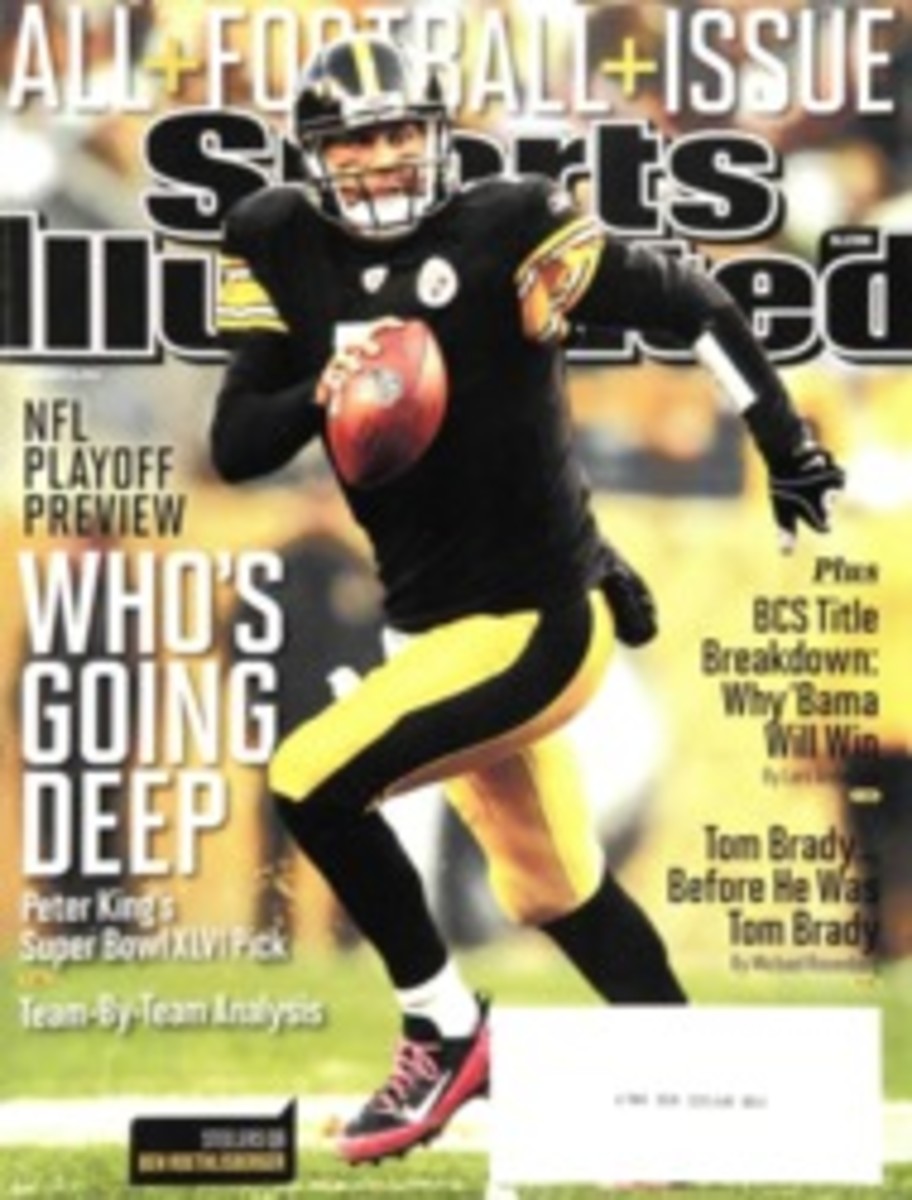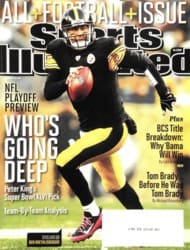
Visions of Perfection
In 2008, his third year in the NFL, Packers receiver Greg Jennings dropped a whopping eight passes, tied for seventh most in the league and putting him in the company of such notorious butterfingers as Braylon Edwards and Terrell Owens. But those days are long gone. Jennings has brought that number down in each of the past three seasons, and in '11 he counted only three that got away, an improvement he attributes in part to a new form of sensory performance training that helps him hone his focus, reaction time and decision making.
The system, developed by Nike's training division, begins with a visit to a touch-screen kiosk (essentially a hyperintense video game unit, used above by the Lions' Ndamukong Suh) that tests and tracks visual and sensory performance skills, from depth perception to reaction time.
That information then provides the framework for a custom-designed on-field training program, as each piece of sensory data defines an individual player's deficiencies and training needs. "We want to quantify everything," explains Paul Winsper, a Nike performance director. "Every step and every drop of sweat."
The sweating that starts in the kiosk moves to the practice field, where players don plastic eyewear with liquid-crystal display lenses, dubbed Vapor Strobes, that flash microscopic electric charges, blocking vision in 100-millisecond patterns. As players run drills, the lenses flicker between clear and opaque, the distractions forcing each athlete to anticipate what is coming and focus on his task, whether it be a running back finding an open hole, a quarterback spotting a free receiver or a wideout guiding the ball into his hands.
A recent Duke University study found that the stroboscopic training improves motion detection and central attention, helping boost visual perception. By taking away partial vision with eight levels of obstruction and varying speeds and modes, the strobes build muscle memory—essentially a high-tech football version of a weighted bat.
In effect, "by giving them less information, we force athletes to utilize what we give them more efficiently," says Dr. Alan Reichow, Nike's lead sensory performance researcher. "[It's] essentially stress training on the sensory system."
For Jennings, who uses the strobes pre- and postpractice in a medley of ball-catching drills, the training has sharpened his in-game focus dramatically. "You can see the ball a little better and react quicker," he says.
Jennings has even persuaded the rest of Green Bay's receiving corps to don the eyewear for workouts. The result? In the 2011 regular season the unit's frequency of dropped catchable balls stood at 7.8%, down from 10.9%—second worst in the NFL—in Jennings's '06 rookie season. And really, who's to argue with a Packers receiver this year?
THEY SAID IT
"We're like the Israelites. After 40 years we're just finding our way."
CHRIS DEL CONTE TCU athletic director, on his school's exodus from the Mountain West to the Big East before being redirected to the Big 12 over the past two years.
PHOTO
MATTHEW EMMONS/US PRESSWIRE (DEL CONTE)
PHOTO
COURTESY OF NIKE (SUH)
THE EYES HAVE IT Suh (top) taps into his senses while Jennings takes the glasses for a field test.
PHOTO
COURTESY OF NIKE (JENNINGS)
[See caption above]

